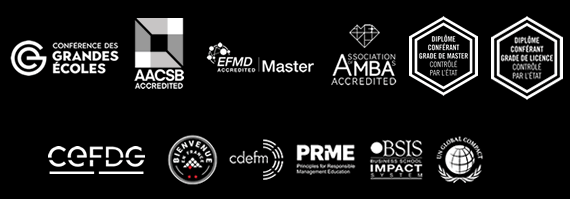An article by Fernanda Arreola, Professor of Entrepreneurship & Innovation and responsible for the entrepreneurship programmes at EMLV, first published in The Conversation.
Let me guess. Your office just became a co-working type open space with shiny yellow cushions and a ping-pong table? Or a new application allows you to do car-sharing with your dear colleagues. Or even better, human resources just announced free smoothies next Friday.
These initiatives are all within the aim of managers to change the way an office works to boost innovation, reduce cost, and modernise the office environment. But the real question is, is this enough to boost employee performance?
It turns out that the question is almost impossible to answer. Why? Because the real questions are, how do you measure the value of such changes on performance? What is the value of a change? What is the value of a service innovation at work?
So to know if cushions and smoothies are effective ways to improve worker performance, we need to ask ourselves a more basic question. How do we measure the impact of services at an office environment on performance?
As a researcher, the temptation is to do a complex analysis that is either too general or too specific. As a practitioner, the solution is to talk about KPIs (key performance indicators, for the uninitiated). But the answer is in neither of those. It is actually in the way we change our comprehension of how to tackle the challenge of measuring a service innovation; because in understanding how to measure it, we will know what innovations to encourage.
Following, I propose three perspectives that can be useful to measure the value of service innovations at work.
Time
Time is money. And employee time is easy to measure. Salary per minute.
What if an office could be conceived in such way that we plan to give more time to our employees? What if we simply made their lives simple. Imagine that you forgot your telephone’s charger, or that it broke. How long would it take you to get a new one? How many phone calls, emails and IT personnel would it take to resolve the problem? How many minutes, and how much is that time worth?
Conceptualising employee services as valuable time allows to have creative and common-sense ideas, as is the case of Facebook’s London offices. The bathrooms there have stands for laptops (no need to walk back to the desk), there are vending machines with supplies, including batteries, USB drives, chargers, and anything else “necessary” you can think of, and all of their offices and working spaces, log you straight into all of your data and information. Their philosophy, time is money!
Comfort
Measuring comfort is more difficult, of course.
What do people do when they are uncomfortable? They complain, they talk and more importantly, they call HR. And they’re absent and they go to the doctor. And they take longer to do their jobs. So these are good measurements for “poor performance”. And they can guide us in ways to make a space more ergonomic and comfortable as many firms have attempted to do.
But there is an even better way of measuring such comfort. One perspective that actually means also increasing performance. What about having guests? Yes, how many of your employees invite people to the office? Because you don’t invite someone over unless you know you will be comfortable, right?
Many companies, including Google, have open policies for allowing their employees to host friends, partners and even student groups – they do so because they’re conformable and they are happy to show off where they work. If your employees choose to host meetings within your own site, be grateful. Providing spaces where people can host and entertain, and think of facilitating invitations, means of access, meals and events that make your employees feel proud. And yes, you guessed it, it means less travelling time.
Testing
The last way of measuring the value of an innovation is what good old Francis Bacon taught us many centuries ago, the scientific method. Yes, design, test, and measure. But wait a minute, what are we measuring? In fact, a good basis for measurement is a comparison: Is A faster when we apply force B, compared to C that has no force B?
For example, a bank might be considering a new “working from home” policy, questioning what impact it could have on security. Too much risk, so the decision is “no way”. But what if you actually designed a study, created the conditions required to make it “safe” and then you observed the results against the remainder of the firm?
A qualitative review of the opinions of people would signal those areas where they felt good and less good; an ethnographic view of what happened to those people will teach you about the advantages and risks and give you some ideas as of how people behave in these conditions; an statistical analysis would let you know which tasks are performed better (more e-mails sent, more time on conference calls, more punctuality) and others that might be not suitable. These tools would allow you to compare the environment that is being tested, against a control group. So other than knowing what you are to measure, you would also know who this design is appropriate for.
Therefore, the question of the impact of a service innovation is actually in the approach we have for thinking about it. This is why brainstorming sessions lead more to smoothies and cushions than they do to making employees feel proud, secure and efficient.![]()
Find Fernanda Arreola’s contact details here. Learn more about Pôle de Vinci’s academic research Business Group.




















